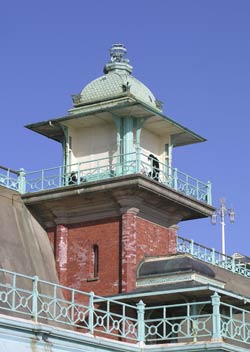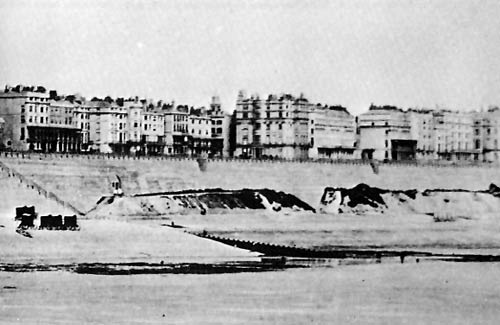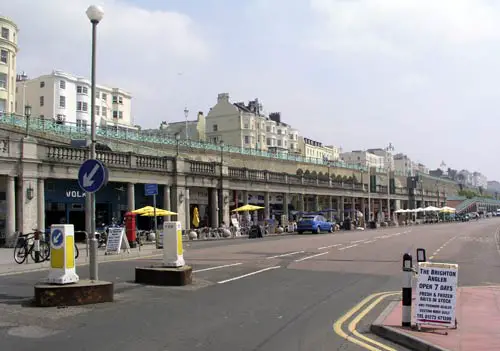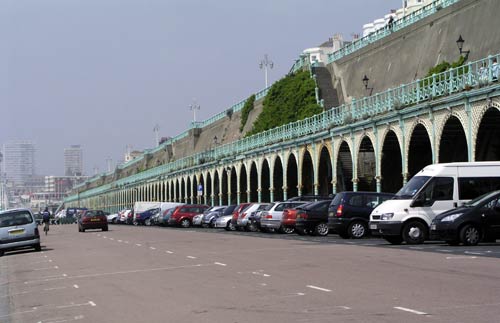Madeira Drive is the name of the road built on the beach at the bottom of the East Cliff. At the top of the cliff, running east, is Marine Parade.

Above what is now Concorde 2
At the beginning of the nineteenth century, the tide came right up to the foot of the cliff, and the cliffs were eroding and subject to periodic landfalls. By this time Brighton was an established pleasure resort or watering hole, and the town had developed eastward from the Old Steine into what today we call Kemp Town. There was concern that the crumbling cliffs would eventually threaten these new developments.
The developers and residents of the streets immediately to the east of the Old Steine and off Marine Parade were the first to build a seawall to protect the cliff. This was around 1795. In 1809 the town commissioners extended the wall further along the foot of the cliff. Thus began a process of land reclamation, which continued throughout the century.
The next step was taken by the developers of the Chain Pier, the town’s first pier, in 1823. The Chain Pier was sited in line with what today is the Madeira Colonnade, a terrace of shops and cafes with a colonnaded walkway. A seawall was built between the foot of the cliff at the Old Steine and the pier. There was a gated entrance at the Old Steine end of the wall, which acted as the pier’s own esplanade and carriageway. The main commercial purpose of the pier was to act as a landing stage for cross-channel ferries.
Major developments took place in the 1830s. William Lambert was contracted by the town authorities to essentially encase the cliff in concrete and hardcore. Lambert’s seawall extended from Old Steine as far as Royal Crescent. Large mounds of chalk and other rubble were also built up at the base of the cliff to provide a further defensive barrier against the destructive power of the sea.
At around the same time, Thomas Read Kemp was building Kemp Town at the Blackrock end of East Cliff. These aristocratic squares and terraces were to have a seafront in keeping with their grandeur, and that is why the cliff face at Blackrock today still looks so much better with its brick and stone facings than the rather ugly cement rendering at Lambert’s end of the cliff. By the end of the decade, the two walls had met and the whole of the East Cliff encased against the sea.
Finally, in the early years of the 1870s, a new seawall was built at the beach level, essentially extending the esplanade wall built for the Chain Pier. The rubble mounds at the base of East Cliff were used as hard core, and the facing of the wall used stone from the first Blackfriars Bridge in London, which was demolished in 1863.
It was on this new seawall that a new road, Madeira Road, was laid out. Its name was later changed to Madeira Drive.

Note the great piles of rubble at the base of the cliff, the wooden groynes, and the bathing machines


